Substance abuse disorder is a complex disease that can affect every aspect of your life. An addiction recovery center is often a necessary step in kicking your addiction to the curb and becoming clean. Many who struggle with drugs or alcohol seek help from a detoxification center to rid their bodies of the harmful substances before beginning the treatment process.

(stockking/Freepik)
However, there’s the traditional way to safely and gradually detox, and then there’s rapid detox. Also known as Anesthesia-Assisted Rapid Opioid Detoxification (AAROD), rapid detox is a method used to detox from opioids quickly. Although it sounds appealing to detox quickly, rapid detox poses several risks to the body.
What Makes Rapid Detox Unsafe?
Many medical experts have raised red flags about rapid detox. The process of AAROD involves patients going under anesthesia and receiving a rapid-acting drug to help remove opioids from their system. One concern is the anesthesia aspect. Anesthesia has its risks, especially for those with pre-existing conditions such as respiratory issues, heart problems, and liver diseases.
Many patients see rapid detox as the best option because they want quick results. But many don’t know about the potential complications and risks of this accelerated process. Anesthesia can have a list of side effects, including:
- Vomiting
- Nausea
- Confusion
- Seizures (in severe cases)
- Cardiac arrest (in severe cases)
In 2012, the CDC posted an article about reported deaths and complications for patients who underwent AAROD in New York City. Of the 75 patients who participated in AAROD at the implicated clinic over eight months, two died, and five others experienced severe adverse effects that landed them in the hospital.
Besides the potentially life-threatening effects, anesthesia isn’t always effective in ridding a patient of their withdrawal symptoms. During and after the rapid detox process, patients may feel pain and discomfort. In more severe cases, rapid detoxification can lead to serious conditions such as blood clots, infection, and even death. This is not to scare you but to educate you so you know the facts to make an informed decision.
Another misconception about rapid detox is that it is a cure for opioid addiction. That’s not the case for any detox treatment. It’s merely the first step in the recovery process. While detoxing helps to move toxic drugs from the body, it’s not a cure for the underlying issues that lead to the addiction, including the mental aspects. Those who go the rapid detox route must still receive ongoing support and treatment from an opioid recovery center.
Many rehabilitation centers offer custom-tailored treatment programs specifically for opioid addiction, including behavioral therapy and medication-assisted treatment (MAT). MAT uses medications like buprenorphine or methadone to minimize cravings and curb withdrawal symptoms. Behavioral therapy is a helpful tool that helps patients break down and discover the emotional and psychological factors that contribute to their use. A behavioral therapist will teach you coping mechanisms to aid in remaining sober.
Breaking Down Rapid Detox
Rapid detox is an expedited withdrawal process administered while the patient is under anesthesia. Its appeal is that it is significantly shorter than a traditional detox program, which takes a week at minimum. While the patient is asleep, medications flush out their system. The whole process takes a day or two.
Not only is rapid detox not as safe as a traditional detox method, but it is also significantly more expensive and not often covered by insurance. Rapid detox is sometimes a last resort for patients who have struggled with severe opioid addiction and have tried other detox methods without success.
Traditional Detox Method
A traditional detox program is usually the best option because it is a personalized treatment tailored to each patient’s needs. Healthcare professionals closely monitor their patient’s progress throughout the detox process. Monitoring is important to ensure patients receive the support and care they need.
Counseling is often a service in traditional programs, which can make the difference between an unbearable and manageable process. Addiction affects the mind, body, and soul. Counseling helps to bring awareness to the behavioral and psychological aspects of addiction.
In addition, traditional detox centers offer a safe environment with 24/7 care. This is most important during the beginning stages of detox and recovery, when pain and withdrawals are most challenging to overcome.
Conclusion
While it may not seem like it at first glance, traditional medically supervised detoxification programs offer more benefits than rapid detox. The most important benefit is that traditional programs are safer. Tailored treatment plans, proper medication, monitoring, and counseling contribute to a successful recovery journey.
If you or a loved one is struggling with drug or alcohol addiction, finding a reputable drug or alcohol detox center is the first step toward a better life. You can be free from the addiction that has been controlling your life. We know that the road to recovery looks and feels scary, but we’re here to provide you with the proper tools that will safely and effectively lead to a sober life of freedom.
